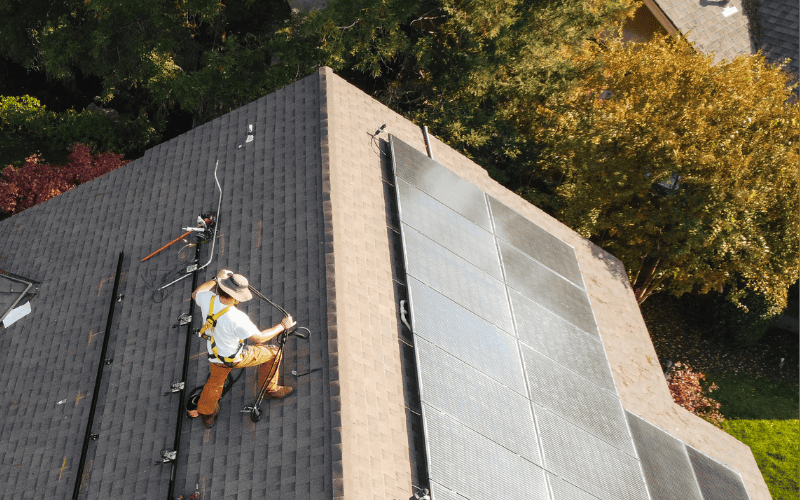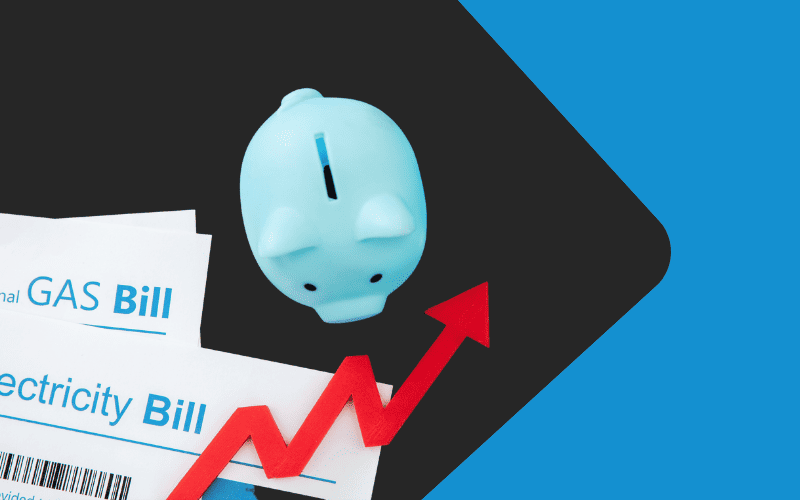Maximize Your Energy Use With A Solar Panel System Installation

The first step in installing a solar panel system is simply to decide if going solar makes financial sense for you. It’s a commendable leap and one that comes with a lifetime of benefits. From lower energy costs, to minimizing your carbon footprint—solar energy has a wealth of different perks. If you’ve already chosen to go forward with installing solar panels, you’ve likely familiarized yourself with many of them already.
So, what’s next? The actual solar panel system installation process depends on the type of system you plan on installing. Some people may opt for a smaller rooftop system d to offset their electricity usage, while others seek to rely more heavily on backup power. Keep reading to get an idea of what to expect from the installation process from Solar Negotiators.
Understanding Solar Panel Systems
Before getting right into the solar installation steps, it’s important to understand how solar panels function and work together. There are two primary ways of generating solar power, and that is with photovoltaic (PV) and concentrating solar power (CSP) or “thermal energy”.

How Does Photovoltaic Solar Work?
Photovoltaic (PV) solar is what you see installed on all residential rooftops around your neighborhood. If you’re installing solar panels at a private residence or for a small building, you’re using PV. The panels absorb photons from sunlight and in turn create an electric field that becomes flowing electricity. These cells are most efficient when exposed to direct sunlight.
Multiple factors such as angle, orientation, and shading all play a role in maximizing your energy production. It’s important that you select a reliable solar contract that knows how to assist you in getting the most out of your solar investment by taking all of these factors into account. A solar professional will help you evaluate your energy usage, but also take care to walk the premise of your home to ensure your solar design layout is optimized to get the most sun exposure possible.
How Does Concentrating Solar Power Work?
Concentrating solar power (CSP) is not used for residential solar. You’ll only find it at large power plants, so this is not the type of installation you’ll see at your home. It involves mirrors that reflect highly concentrated sunlight into receivers. It’s converted to heat and then produces electricity.
Benefits of Renewable Energy and Beyond
Many people who go solar do so to reduce their energy bills. Producing your own energy and selling it back to the electric companies makes it an easy investment decision for homeowners. Solar energy is a type of renewable energy that can always be utilized while the sun is out. Why not take advantage of this technology today and let it work for you in the long run?
If you’ve already heard of NEM 3.0 and what that means for solar in California, the opportunity to use solar as a renewable energy source does not change. To help meet California’s aggressive renewable energy goals—the state has updated their solar policy to better support the use of battery storage. California’s new policy will reduce the export rate for electricity generated by household solar panels by around 75%, from an average of 30 cents per kWh to 8 cents per kWh. Our Powershift battery options help homeowners achieve energy savings by ensuring the solar system is properly sized and balanced with storage to ensure excess power in Spring and high-production months doesn’t escape to the grid at disconnected values.

With the rate of technology advancing so quickly, it is a certainty that we will see more efficient panels being produced and sold on the market in the next decade. During that period you’re also going to be subject to paying nearly $20k in energy costs (at minimum) while you wait for more efficient panels to become available. This is all without energy increases to California’s utility prices, which we know increase 5x more often than any other state.
As it stands, prices for solar batteries run about $1,000 per kWh of storage. This means the average price for a battery storage system ranges from $10-30k depending on the level of storage you want.
Under NEM 3.0, you will be faced with the option to prioritize either energy savings or backup power. If you choose to prioritize savings over backup power, you will be able reduce your overall project costs and payback period. As smart-battery technology continues to improve, so will the project costs for solar.
The Steps To Installing Home Solar For Savings
As with anything, different solar companies may handle the installation process their own way. At Solar Negotiators, we have dedicated teams for each part of the installation process to make things quick and simple for our clients. However, solar panel system installation always involves a few key elements, such as:

Step 1 - Site Visit and Evaluation
Before installation is fully underway, your home will be evaluated through what is called a site walk. Your home energy needs will be assessed, as well as the compatibility of your home with the incoming PV system. This includes things like the following:
- Roof – If you’re installing solar panels on the roof, it must be structurally sound and capable of supporting them.
- Orientation of Home – How your home faces the sun will be important as panels will be installed according to where they can get the most direct sunlight.
- Obstruction – If there are any trees blocking optimal places,they may need to be trimmed or the shading will also be taken into account to calculate the estimated production.
- Electrical Box – Your current electrical box must be able to support the PV system. If it’s inadequate, you may need a licensed electrician to complete upgrades.
There may be two types of site visits – one performed initially for your installer to design the system, and another completed by an engineer to perform the above evaluations.
Step 2 - Energy Consultation
Since solar is a long-term investment, it is important to understand what your energy goals and preferences are as a homeowner.
There are multiple benefits and options you can get with solar such as:
- Cost savings
- Emergency preparedness
- Environmental benefits
- Energy independence
Our solar experts can explain each of these benefits and provide you a variety of options based on your goals and preferences as a homeowner.
Step 3 - Permits and Incentives For Solar
Making the switch to solar power is exciting, but the change does come with a lot of moving parts. After your solar design is approved, your solar contract will request a solar permit from your local building department. This can take anywhere from 10-20 business days depending on the jurisdiction you fall under. You’ll need permits for the installation itself, which vary depending on your location.
Step 4 - Schedule Your Installation
Things get very exciting from this point forward! Once all the plans are officially made and the necessary permits are acquired, your solar contractor can schedule your installation. Your chosen equipment will be ordered and set to arrive before installation day rolls around.
Step 5 - Install Solar Panels
You’ve made it this far, and your home and family are ready to begin your journey with solar energy.
On the day of solar installation, your installing contractor and their crew of PV technicians will follow a similar checklist:
- Check and prepare the roof.
- Install wiring that connects your new PV system to the existing electrical system in your home.
- Install support onto your roof for the solar panels and attach panels.
- Connect inverters to the panels to begin converting energy for use in homes and within the electrical grid.
Step 6 - Final Approval and Grid Interconnection For Solar Installation
Once the solar panel system installation is complete, a final inspection with a local representative takes place. After they approve the work completed by the installers, your utility company sends someone out to check the system and approve it, as well. Although the system inspection itself will be completed within a couple of hours, scheduling it can take up to three weeks. A solar contracting company crew member will guide a representative from your city’s planning & zoning commission and utility company through a series of checkpoints.
This is to ensure everything was installed correctly and to code with the building regulations that were proposed in the initial plans. Once you pass inspection and get the “green light,” so to speak, you can turn your system on. Although your system is installed, PG&E does not recognize the system until they approve your NEM application.
Like most solar customers, your system is probably not “off-grid,” meaning you will need to undergo the interconnection process. Once your system is grid-tied, any excess power your solar produces will be fed back to the grid. Your utility provider must give formal approval to register your system’s production. Like the city’s physical inspection of the system, the utility provider performs its own verification process. They need to ensure all technical and administrative requirements are met before your application is approved and you start racking up credits for your solar power.
Frequently Asked Questions
How Long Does It Take To Get A Solar Installation?
The time it takes to finish a solar install project depends on several factors such as the complexity of the installation, permits and paperwork, solar company schedule, and quality assurance measures. Once you’ve signed into a solar contract the whole start to finish can take anywhere between 1-4 months. It’s important to ensure that you schedule an appointment ahead of time and allow for extra time if you want to get your project completed in time for the bright summer days.
Will I Still Have Power During An Outage?
Unless you have an off-grid system, you will lose power in the event of a power outage unless you have batteries installed in your home. Solar-only systems do not provide backup capabilities because they operate using the energy grid. If the grid goes down, so does your solar system. Under NEM 3.0, you may be able to store that solar energy within solar batteries to draw from during an outage.
Do I Need To Upgrade My Electric Panels For Solar Panel Installation?
For most new homes, they should be equipped with good enough electrical panels. Older homes may require an upgrade in order to install a solar panel system. If your home does not have the proper electrical panels, it may be unsafe and a hassle for the circuit breaker to keep resetting. A main panel change may be needed in older homes or do accommodate a larger solar panel system. This is because the current panel doesn’t have enough amperage to handle the power capacity potential of the newly installed solar system. Most homes today need at least a 200-amp service, but some older homes may have less. The main service panel doesn’t have enough circuits, so there is no space for a solar circuit.
Will I Need To Pair My Solar Panels With a Battery?
After NEM 3.0 has passed in California, export rates for solar production have been significantly reduced and the payback period will be slightly longer compared to NEM 2.0.
Under NEM 3.0 rules, 100% solar production offset no longer helps homeowners achieve energy savings.The coupling of solar and battery storage is needed because of the reduced rates for solar production. It is not possible to capture all available solar production without battery storage.
Installing a battery with solar panels will allow homeowners to save more as the battery would be smart enough to use the stored energy at peak times when it is the most economical to do so. A smart battery will calculate when to store, use, and send excess energy back to the grid, all while you can enjoy knowing it is working hard to reduce your electric bill.
What Do I Need To Do After An Install?
After a successful solar system installation, you can monitor your savings in real time using Know True-Up monitoring software. This tool allows homeowners to view their energy usage, savings, and exports back to the grid. It uses your utility provider’s actual peak demand rates as well as your export rates and provides a net-consumption total in dollars and kW. It’s a great tool to monitor your home investment so you can stay on the track to accomplishing your energy goals as a homeowner.
Final Thoughts
Installing a solar panel system typically takes a few months in total, but it provides decades of clean, renewable energy for your household. You’ll have more control over your home energy costs and visibility into your energy usage habits. In addition, you are free from future utility rate increases, as you lock in your rates for 20 years after switching to solar. Lastly, you have the satisfaction of knowing you’re having a positive impact on the environment as you pull less power from the utility grid.All of these things are well worth waiting through the installation process—and the rewards keep on going!
If you are interested in making the switch to solar energy, contact Solar Negotiators for a free, no-obligation quote. Our solar professionals can help you evaluate how many panels you need, how much you can save, and what financing you qualify for during an in-home consultation.

